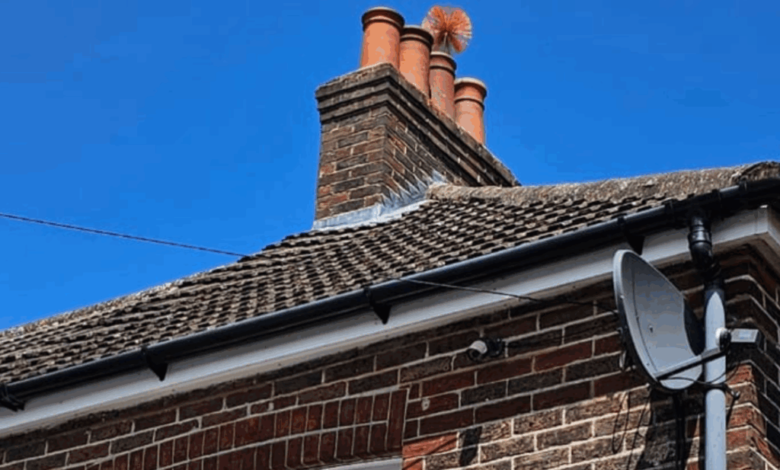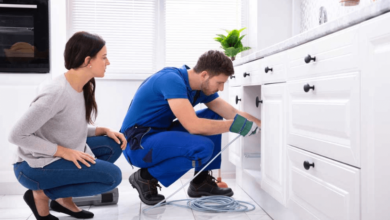Top Signs Your Philadelphia Chimney Needs Sweeping Urgently

Introduction
Philadelphia’s rich collection of historic homes and wood-burning fireplaces adds charm and comfort during the colder months. But with that charm comes responsibility—especially when it comes to fireplace and chimney maintenance. Over time, chimneys collect soot, creosote, and debris that can pose serious health and safety risks. Recognizing the early warning signs of chimney buildup is crucial for preventing fires, carbon monoxide leaks, and expensive repairs. If you’re noticing strange odors, poor drafting, or black residue, it’s time to consider a professional chimney sweep Philadelphia service to restore safety and performance.
In this article, we’ll explore the most common signs your chimney needs sweeping urgently, why it’s dangerous to delay the process, and how regular maintenance can protect your family and your home.
Why Chimney Sweeping Matters in Philadelphia Homes
Historic Architecture and Chimney Design
Philadelphia is known for its historic rowhouses and colonial-era architecture, many of which still have original fireplaces and chimneys. These older structures often have narrower flues and less efficient ventilation compared to modern designs, making them more prone to soot buildup and airflow blockages. Neglecting routine cleaning in these homes can quickly lead to dangerous conditions, including the risk of chimney fires.
In newer properties, chimneys are often connected to furnaces or gas appliances. While they may not collect as much soot as wood-burning fireplaces, they still need regular inspection and cleaning to ensure safe venting of gases and to avoid moisture damage.
1. Smoke Is Backing Up Into Your Home
When smoke doesn’t escape through the chimney as it should and instead pours into your living room, it’s one of the clearest signs of a blockage. This can be caused by creosote buildup, debris, or even animal nests inside the flue. Creosote is a flammable byproduct of wood combustion and builds up inside the chimney over time, especially when burning unseasoned wood or using the fireplace frequently in winter.
Not only is indoor smoke unpleasant, but it’s also a health hazard. Prolonged exposure to smoke can cause respiratory irritation, headaches, and more serious conditions if left unresolved.
2. Strong, Unpleasant Odors Coming from the Fireplace
A musty, smoky, or burnt smell coming from the fireplace—even when it’s not in use—is often a sign of creosote accumulation. The odor intensifies during humid or rainy weather, which causes the odor to seep into your home. This buildup of creosote not only smells bad but also significantly increases the risk of a chimney fire.
Another potential cause of foul odors could be animal activity. Birds, squirrels, or raccoons may build nests inside the chimney flue. These blockages not only reduce ventilation but also introduce bacteria and odor into your home.
3. Black or Oily Stains on Fireplace Walls
Dark residue or shiny, tar-like deposits inside the firebox or around the damper are warning signs of excessive creosote buildup. This material is highly combustible and is one of the leading causes of chimney fires. When you start seeing oily stains on the interior walls or near the opening of the fireplace, it’s time to stop using it and call a professional.
In addition to creosote, soot buildup can also stain nearby walls and ceilings, especially if airflow is restricted and smoke backs up during use.
4. Difficulty Starting or Maintaining a Fire
When airflow inside the chimney is blocked, fires may struggle to stay lit or produce low heat. A good draft is essential for proper combustion, and chimney obstructions interfere with that process. If your once-reliable fireplace is now producing weak flames or going out quickly, the issue may lie in the flue.
Sometimes homeowners assume the wood is the problem, but in many cases, it’s the chimney restricting proper air movement. Sweeping the chimney often resolves this issue quickly and restores heating efficiency.
5. Excessive Soot Falling Into the Fireplace
A small amount of ash and soot is normal, but if you’re regularly seeing black particles or dust falling from the chimney into your fireplace, it’s a red flag. Excess soot indicates your flue is reaching capacity and can no longer safely contain combustion byproducts.
This can create not only a mess in your home but also a risk of sudden ignition if a fire is started before the soot is cleared. In extreme cases, falling debris can even include pieces of deteriorating chimney liner or bricks, signaling structural damage that needs immediate attention.
6. Damper Is Hard to Open or Close
A functional damper is essential for controlling ventilation and preventing cold air or animals from entering your home when the fireplace isn’t in use. If your damper becomes difficult to move or doesn’t seal properly, it could be coated in creosote or rusted from moisture damage.
Stuck or warped dampers not only affect energy efficiency but also serve as an indicator that your chimney hasn’t been maintained properly. Moisture entering through a blocked or damaged chimney can rust metal components quickly, leading to further issues.
7. Sparks or Embers Coming from the Chimney
If you notice sparks or embers rising from the chimney when the fireplace is in use, this is a serious fire hazard. These burning particles could land on nearby roofing materials, dry leaves, or adjacent structures, potentially starting an external fire.
This issue is typically caused by an overloaded flue filled with flammable debris. It’s an emergency signal that your chimney needs to be cleaned and possibly inspected for a cap or spark arrestor.
Health and Safety Risks of Ignoring Chimney Maintenance
Carbon Monoxide Poisoning
A blocked chimney can prevent toxic gases, like carbon monoxide, from venting out properly. Carbon monoxide is odorless and invisible but can cause symptoms such as dizziness, nausea, and fatigue. In high concentrations, it can be fatal. Regular chimney sweeping ensures that flues are clear and safe for gas to escape.
Chimney Fires
The biggest risk of neglecting your chimney is the potential for a fire to ignite within the flue itself. Chimney fires are often fast-burning and intense, and they can quickly spread to other parts of the house. Many homeowners don’t even realize a chimney fire has occurred until an inspection reveals scorched masonry or cracked liners.
How Often Should You Schedule a Chimney Sweep in Philadelphia?
The National Fire Protection Association (NFPA) recommends that chimneys be inspected annually and cleaned as needed. For homeowners in Philadelphia who use their fireplaces regularly—especially during the cold, damp winters—it’s advisable to sweep the chimney at least once a year before the heating season begins.
If you’re burning wood frequently or have an older chimney with poor draft, more frequent cleaning may be necessary. Gas-burning appliances also benefit from periodic chimney cleaning to remove condensation residue and prevent corrosion.
Read Also: How to Look for After an Adult In-Home Care Near Me Cincinnati
The Role of Professional Chimney Sweep Services
Thorough Inspections
Certified chimney professionals go beyond surface cleaning. They inspect your flue, liners, damper, and masonry for damage, moisture intrusion, and animal nesting. Advanced tools like chimney cameras help detect hidden cracks and creosote layering.
Expert Cleaning and Equipment
Professionals use industrial-grade brushes, vacuums, and HEPA filters to ensure that no debris escapes into your living space during the cleaning process. DIY methods are not recommended due to the complexity and safety concerns involved with chimney systems.
Conclusion
Your chimney may seem like a simple structure, but it plays a critical role in keeping your home safe, warm, and efficient. From smoke backing up into the room to difficult damper operation or strange odors, these signs shouldn’t be ignored. Regular chimney maintenance is not just a seasonal chore—it’s a vital part of home safety. If you’ve noticed any of the symptoms covered above, scheduling a chimney sweep Philadelphia service is the best way to protect your home from fire hazards, carbon monoxide exposure, and costly repairs.
By trusting a professional chimney cleaning service, you not only ensure proper fireplace function but also extend the life of your system and maintain peace of mind during every fire-lit evening in your Philadelphia home.




